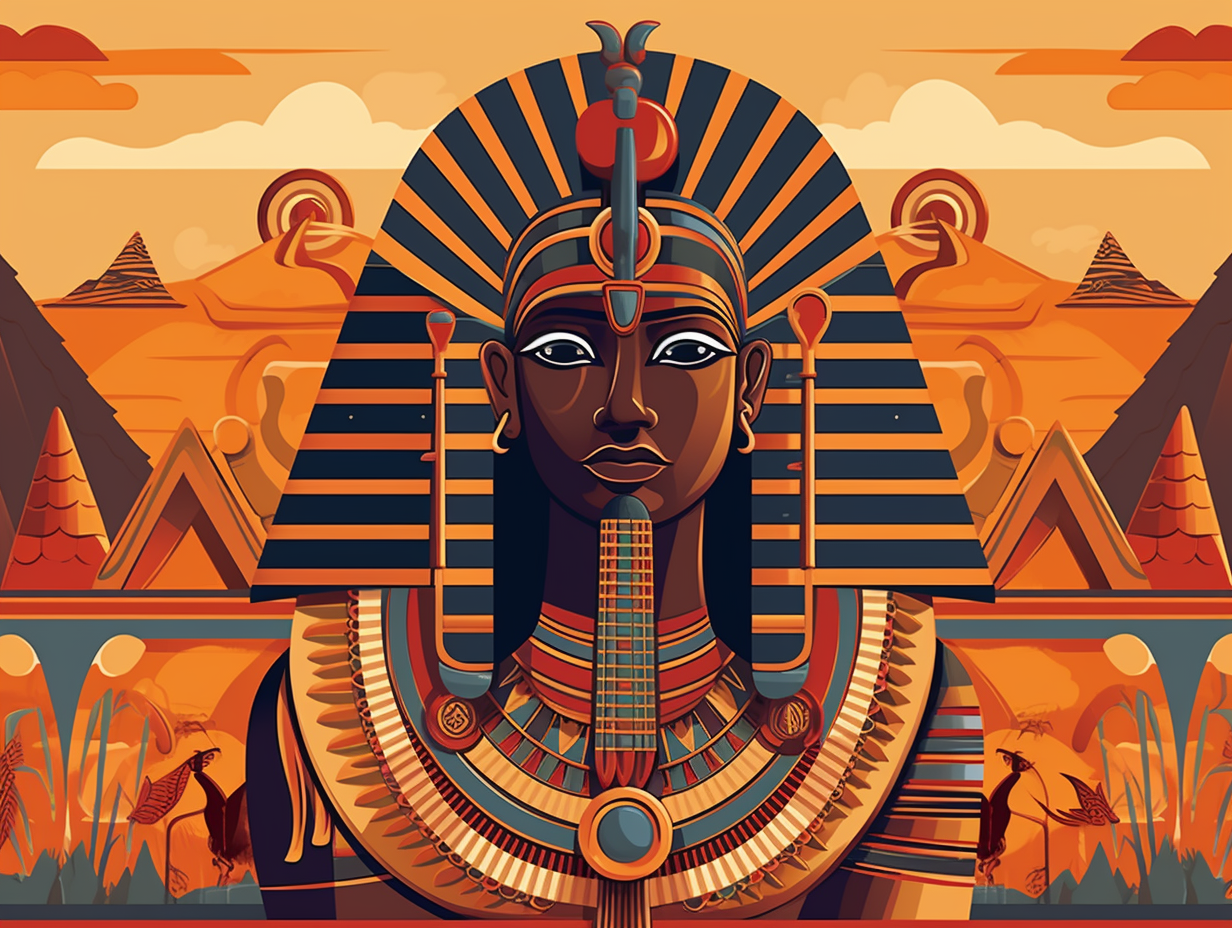Discover the Top 10 Astonishing Fun Facts About Djoser - The Ancient Egyptian Innovator

1. Bedtime Structures: The First Pyramid
Forget bedtime stories in ancient Egypt, they had bedtime structures: The Djoser Pyramid, the world's first pyramid and oldest remaining stone building, was a monumental architectural leap, leaving mud-slabbish rectangular tombs in its shadow and setting new standards for pharaoh burials.
Source => thecollector.com
2. Cake-Like Construction of Djoser's Pyramid
If Djoser's step pyramid was a cake, it would be one with a recipe that changed mid-bake: The construction of the pyramid began as a square mastaba, evolved into a rectangular shape, and even included false starts before ultimately reaching its final step pyramid design.
Source => worldhistory.org

Did you know that King Tut had almost perfect teeth with no cavities or missing ones? However, he still dealt with wisdom teeth issues and an incomplete cleft palate. Discover more about his dental secrets!
=> Fun Facts about King-Tut
3. Party Central: The OG Pharaoh Hotspot
Before Flinstone's Bedrock, there was the OG hotspot for pharaoh parties: Djoser's step pyramid served as the earliest large-scale cut stone construction ever crafted by human hands while also doubling as a ritzy ceremonial venue for the Sed festival, a swanky royal jubilee where the Pharaoh could show off his fitness to rule, divine skills, and probably some hieroglyph-approved dance moves.
Source => en.wikipedia.org
4. The Minotaur-Approved Maze Beneath Djoser's Pyramid
With a maze concealed beneath its feet that would make even the legendary Minotaur scratch his monstrous head: The Step Pyramid of Djoser hides an underground network of tunnels and chambers spanning over 3.5 miles (5.5 kilometers), ingeniously designed with storage galleries, offering tunnels, and even an unfinished chamber that might've moonlighted as an afterlife palace.
Source => livescience.com

5. The Stairway to Heaven Predecessor: Step Pyramid
Before the Stairway to Heaven, there was the Step Pyramid: Djoser's Step Pyramid started as a simple mastaba tomb, but decided to step up its game and eventually transformed into a whopping 197-foot-high masterpiece. Boasting six magnificent layers and a total of 11.6 million cubic feet of stone and clay, it held the title of "largest structure in town" during its time. But wait, there's more! Hidden beneath this ancient architectural marvel is a 3.5-mile labyrinth, in which mummies from various eras seem to have had a party, occupying Djoser's burial chamber after the pharaoh's original mummy called it quits and left the building.
Source => livescience.com
6. Hidden Empire-State-Heavy Labyrinth Under the Sands
While Djoser's step pyramid might seem like a stairway to heaven, it houses more than meets the eye: Hidden beneath its ancient sands lies an intricate web of underground tunnels and galleries stretching almost 6 km long, weighing in at a whopping 2,760,000 tons – which, by the way, is about 15 times the weight of the Empire State Building!
Source => en.wikipedia.org
7. From The Mummy's Imhotep to Pyramid Designer
When Imhotep wasn't busy moonlighting as a villain in The Mummy movies, he helped design a phenomenon called the Step Pyramid: This pyramid, created for King Djoser at Saqqara, consists of six stacked mastabas and is not only the oldest known pyramid in Egypt, but also revolutionized pyramid tombs with its use of limestone instead of mudbrick.
Source => almendron.com
8. Limestone: The Pop Star of Ancient Egypt
If limestone were a pop star, Djoser's step pyramid would be its dramatic debut album, topping the charts of ancient Egyptian architectural prowess: The first large-scale cut stone construction in human history, Djoser's pyramid marked a major shift in burial practices and set the stage for future royal monuments, showcasing the intensifying might of the royal government.
Source => en.wikipedia.org
9. Djoser: Flexing Administrative Muscles
When Djoser wasn't busy taking colossal steps into the future, you could find him flexing his administrative muscles: His step pyramid, as the earliest massive stone building in Egypt, marks a significant shift in labor organization and the way resources were managed by the royal government, leaving behind the days of mud-brick monuments and stepping into a grander, more labor-intensive era!
Source => en.wikipedia.org

10. Bye, Mud Brick! Djoser Brings the Bedrock Big Guns
Move over, mud brick; Djoser's bringing in the bedrock big guns: Djoser's mortuary complex marked a groundbreaking milestone in stone architecture, ditching the old-school mud bricks for meticulously cut stones, combined with fancy "dummy" buildings for his eternal afterlife leisure, and setting the stage for all the royal memorial monuments that followed.
Source => khanacademy.org
Related Fun Facts




















